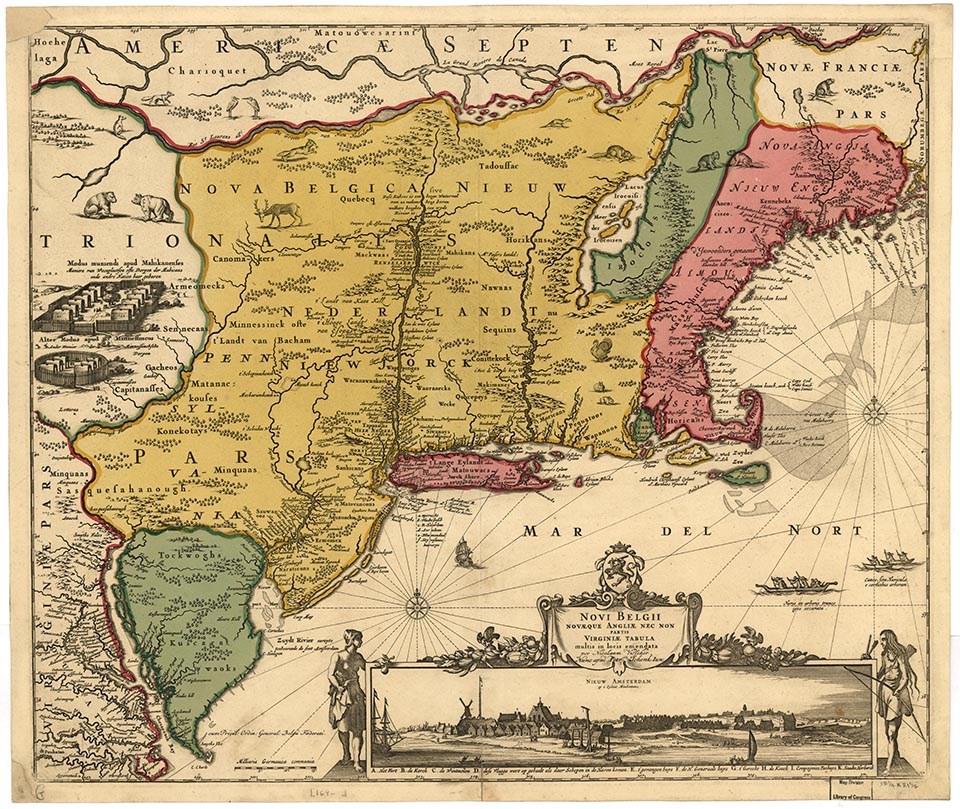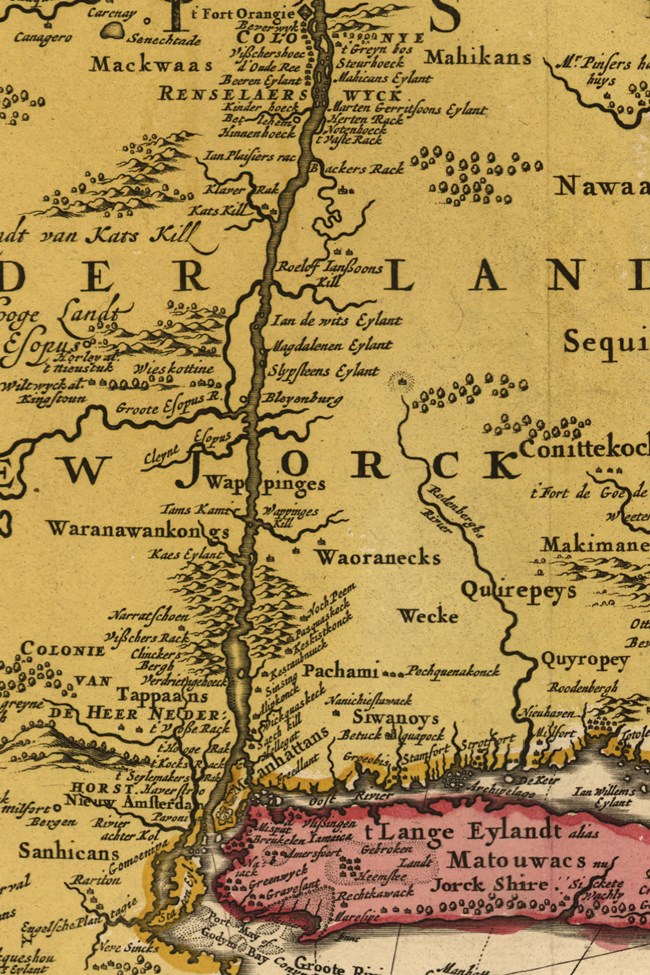
The Native American presence in the Hudson River valley of eastern Prior to European settlement of Hyde Park, this area was part of the homeland of the Wappinger Indians, an Eastern Algonquian-speaking tribe from New York and Connecticut. They may have used these lands as hunting grounds and for agriculture. Following Dutch settlement in the Hudson Valley beginning in the seventeenth century, Europeans forced out the Native Americans and granted large tracts of land to non-native people for settlement and speculation. 
The Dutch came to the New World looking for a Northwest Passage through the continent, hoping to establish a trade route to the East. Earlier attempts had failed, but in 1609 Henry Hudson, sailing under the Dutch flag, made yet another attempt to find the fabled shortcut. While his efforts were ultimately unsuccessful, Hudson did manage to give the Netherlands a foothold on the North American continent in a place that would come to be known as New Amsterdam. The contact period refers to the sustained relations between the Native populations of the mid-Hudson River valley and European explorers that commenced with Henry Hudson’s 1609 voyage up the river that today bears his name. Many groups of Native Americans inhabited the area through which Hudson traveled, including the Hackensack, Tappan, Esopus, and Warranawankongs along the western side of the river and the Rechgawawank, Wiechquaeskeck, Sinsink, Kichtawank, Nochpeem, and Wappinger along the eastern side of the river. All of these groups spoke a Munsee dialect of the Algonquian Delaware language. Groups in the vicinity of Hyde Park were farmers and fisherman who lived in clusters of longhouses in hamlets or on isolated farmsteads. Furs and pelts acquired from the Native Americans were important commodities for European markets. The most sought after was beaver, but others included otter, bear, mink, raccoon, fox, marten, wild cat, muskrat, and deer. Trade in these commodities was so coveted that Dutch merchants petitioned for exclusive trading rights. In 1614, an exclusive trading agreement was granted to the petitioning merchants “for four voyages or three years.” In exchange for these furs and pelts the Europeans traded “iron axes, hoes, knives, fishhooks, strike-a-lights, brass kettles, bangles and bracelets, jews-harps, mirrors, glass beads, stroud cloth, blouses, pants, stockings, needles and thread, tobacco pipes, an occasional gun, powder and lead, rum, beer, and other items." Disease such as smallpox, measles, diphtheria, and scarlet fever, for which the native people had no immunity, arrived with European explorers and wiped out hundreds of thousands of the native people in this region. Colonization took out the rest as wars erupted, devastating villages and wiping out populations. Many survivors left the area, forced to live thousands of miles from their ancestral home. Sources Frederick E. Hoxie, ed., Encyclopedia of North American Indians: Native American History, Culture, and Life from Paleo-Indians to the Present (New York: Houghton Mifflin Co., 1996). Anton Treuer, Atlas of Indian Nations (Washington DC: National Geographic, 2014). |
Last updated: February 14, 2022
